Palm Club
2011 – 2012
Palm Club consists of a series of interventions in public spaces by applying a stencil on abandoned objects in the streets. The pattern applied creates both a genealogy of those objects and a symbolic social link between the inhabitants of a territory. This project won the Mediatine COCOF prize in 2012.
" [. . .] By planting her virtual palm trees on abandoned objects and scraps of the consumer society in public space, Katherine Longly intervenes in a transgressive and civically way on the urban structure, or, more specifically in its tears, encouraging ourselves to recognize us as actors of the social fabric and therefore together to mend it."
Sample of the introductory text of the Mediatine prize's catalog, February 2012,
by Solange Wonner and Olivier Maingain
Palm Club is an urban art project based on the application of the same pattern on different objects abandoned in the city. Many inhabitants of Brussels get rid of bulky items that no longer have use for them by simply dropping them on the pavement. This was the starting point of the Palm Club project. I designed a stencil representing a palm tree, which I placed on every piece of left furniture I bumped into during my walks in town. The color of the palm tree differs according to the object or its environment.
Scrapped objects on the sidewalk can be seen as an incivility and unfortunately most of they are.
In this case, the act of painting a palm tree - a tree that evokes, by the power of its symbolism, holidays, sun, and welfare, - even if it highlights the significant number of these illegal dumpings, relieves them of their unwanted status for a moment and transforms them into meaningful artistic intervention supports. This helps to put the time of a glance in brackets, the lack of consideration of some people for the public space we share. More fundamentally, it suggests the possibility for everyone to intervene actively and directly to improve our environment.
This project also acquires a committed dimension when the palm tree denounces the incivilities of the authorities themselves. Indeed, I happened to discover bulky items abandoned for weeks, where public works were suspended. Incivility is not always the prerogative of individuals. This fact often arouses the anger of residents, who then see the palm tree as an ally of their discontent, a potentiality to make their voices heard in a pragmatic and peaceful manner.
But sometimes the authors of illegal dumping may have other plans. It is sometimes a way for them to offer these items to their nearest neighbors, easily and free of charge ; at the time bartering is trendy – particularly because of the economic crisis and the increasing will to consume less. This can be seen as a first degree recycling plan.
Moreover, those objects have a style that no industrial Swedish furniture will ever have. Palm Club adds a layer of history to those objects. The palm tree offers a kind of genealogy to objects, and a possibility to follow their journey from one owner to the next one. The donor does not know who will be the beneficiary of its object. My gesture makes tangible the filiation between them. This contributes to create, symbolically, more social links.
Palm Club also creates links in a very concrete way. Spray painting palm trees around the neighborhood, day and night, arouses curiosity of passersby and residents. At first, they can seem suspicious because I use spray paint that evokes "tagging" which is immediately associated with the deterioration of private and public property. But looking closer, people quickly realize the apparent futility of my gesture, and question it even more. This leads to encounters and discussions that would not have occurred in another setting. Palm Club thus refers to this community sharing the same living space and meeting briefly every day.
It also encourages us to see the city in a different way ; to wander randomly in the streets without any precise aim becomes a real pleasure. My journeys from one place to another are no longer purely functional, they acquire a playful dimension – both for me and passersby amused by the proliferation of palm trees along the way. This changes the relationship we have with the city; it is thus transformed into a huge playground, a benevolent and accomplice entity.
Palm Club presents itself as a debate on the city ; as an observation, but also carrying a constructive proposal. It initiates a reflection about living peacefully in one's city, which we can reappropriate through simple gestures. So Palm Club stands at the crossroads of urban art and a certain "social art".
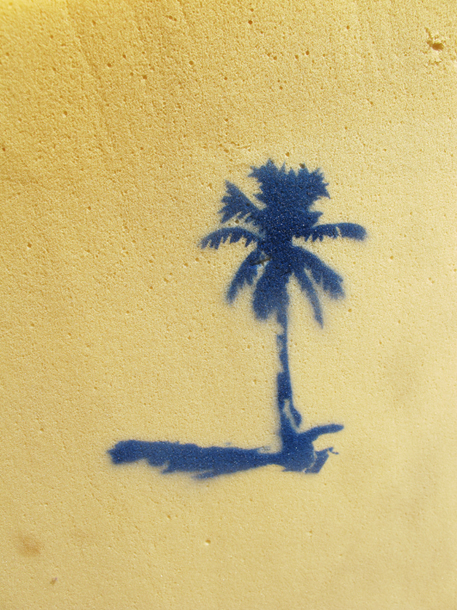 |
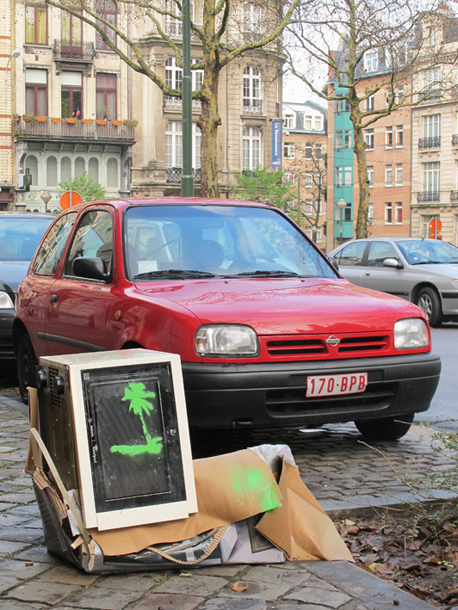 |
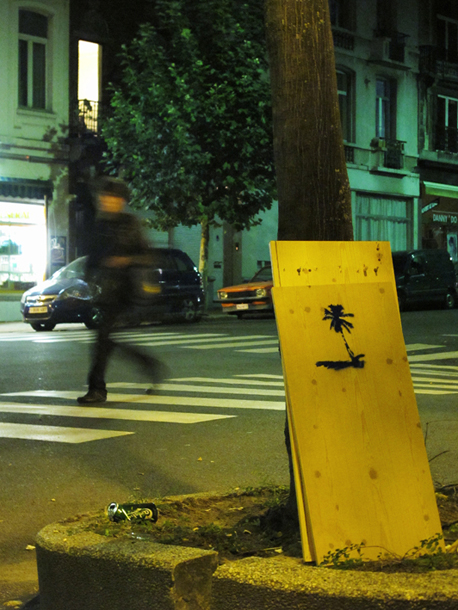 |
 |
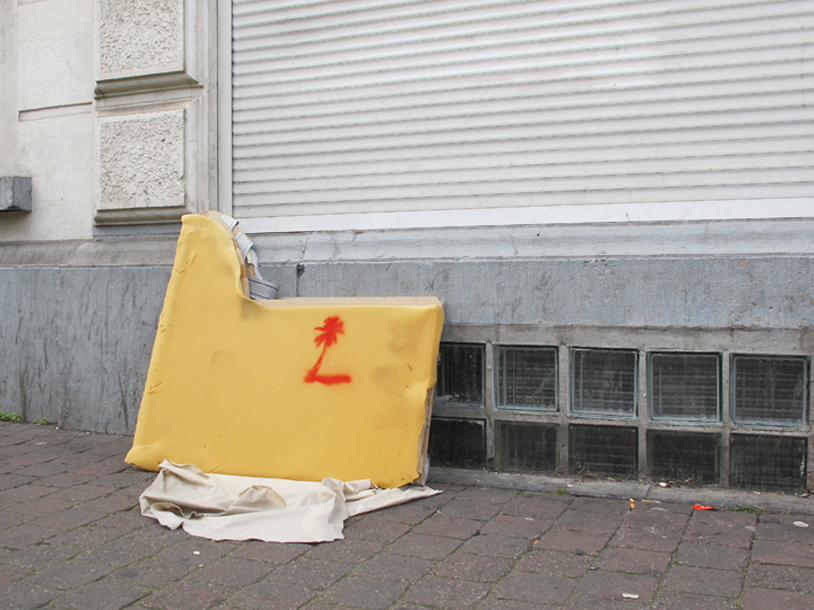 |
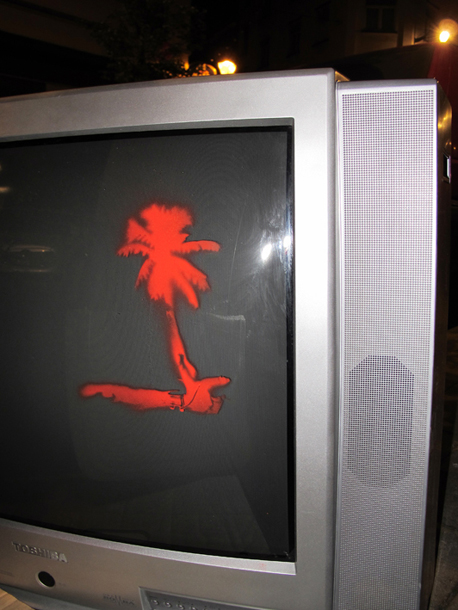 |
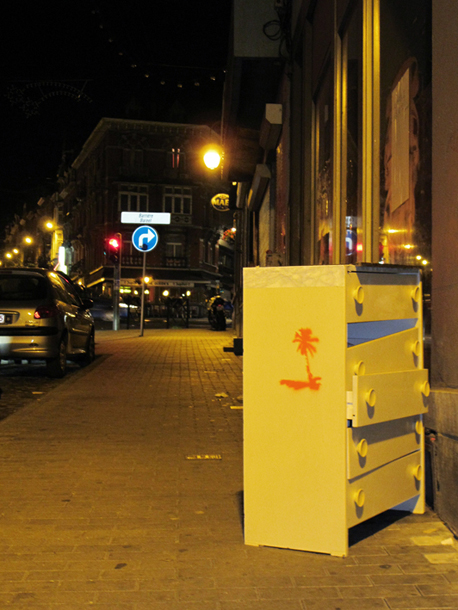 |
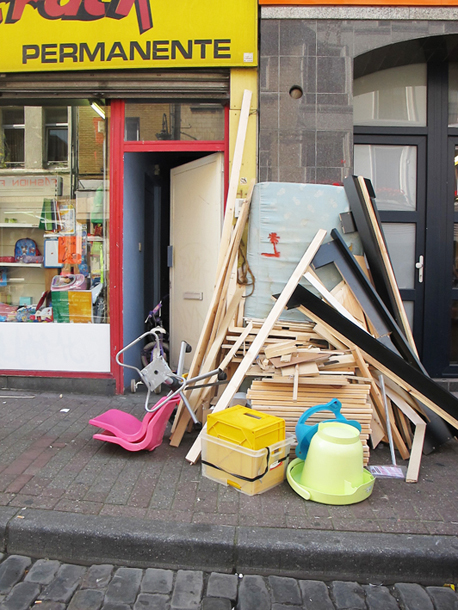 |
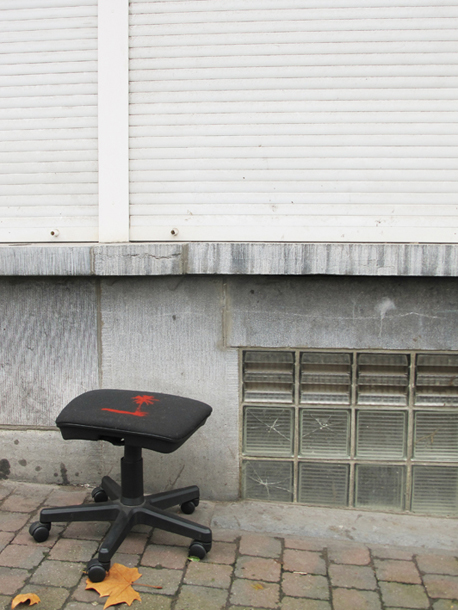 |
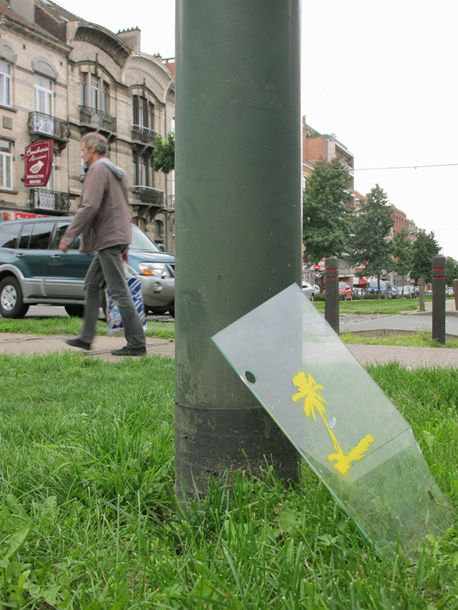 |
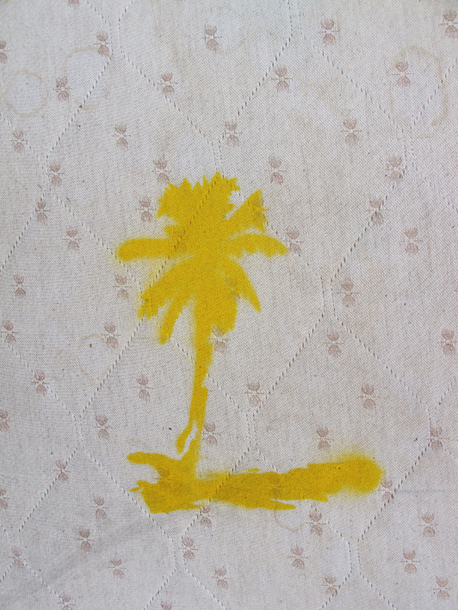 |
 |
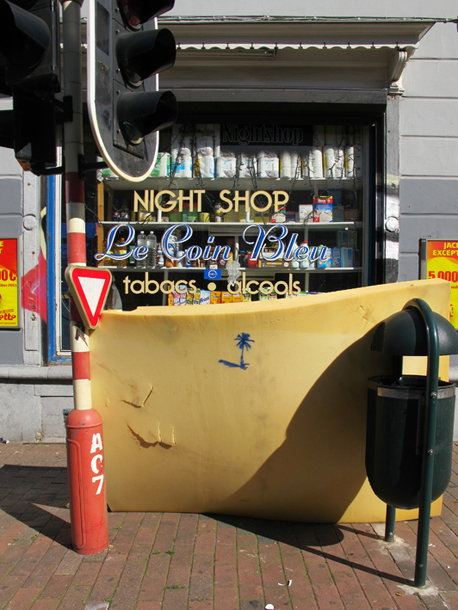 |
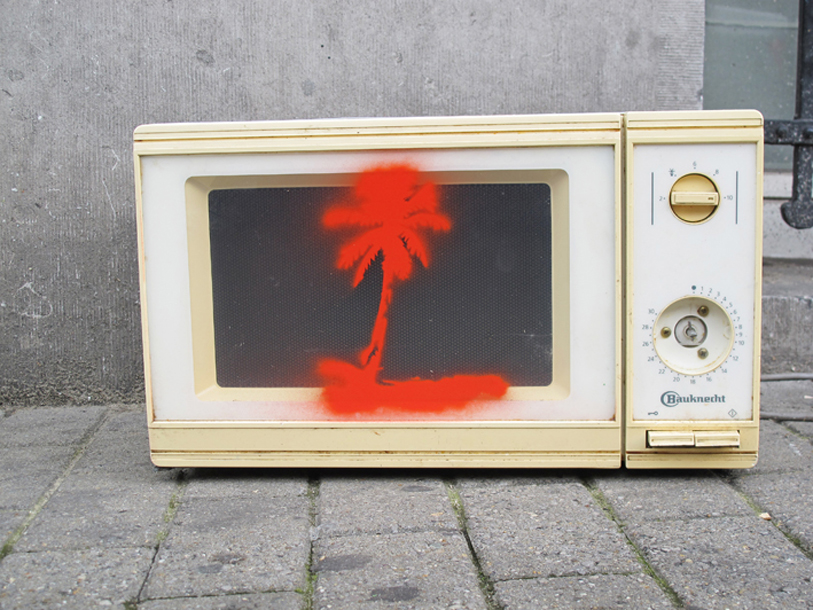 |
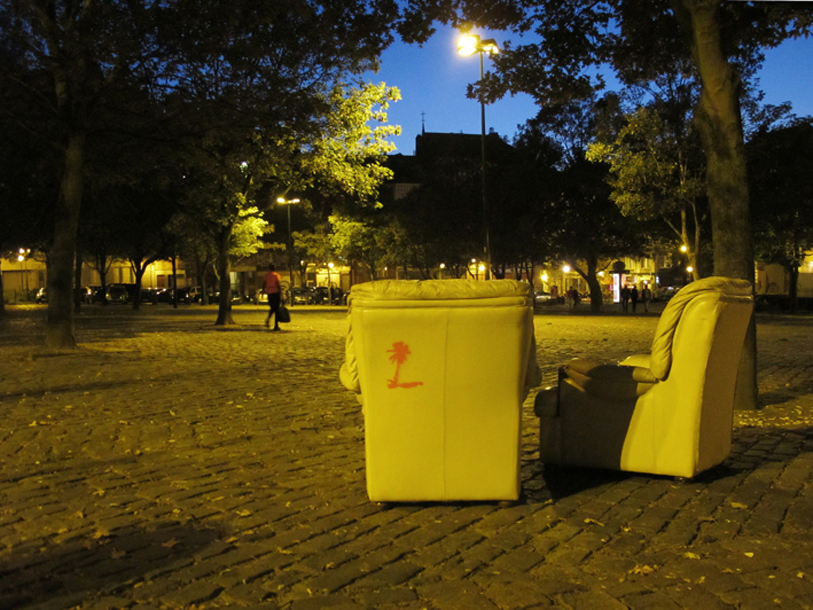 |
 |
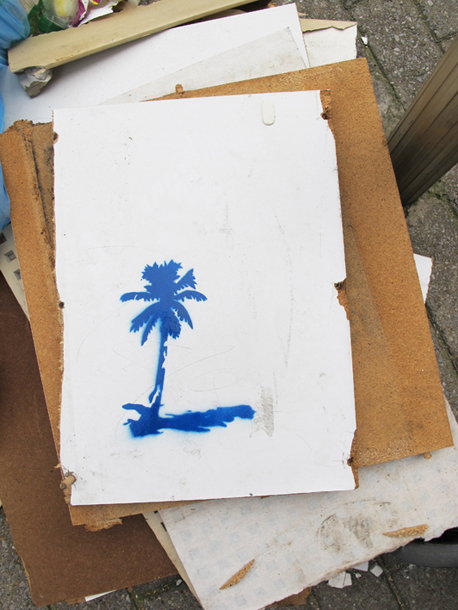 |
 |
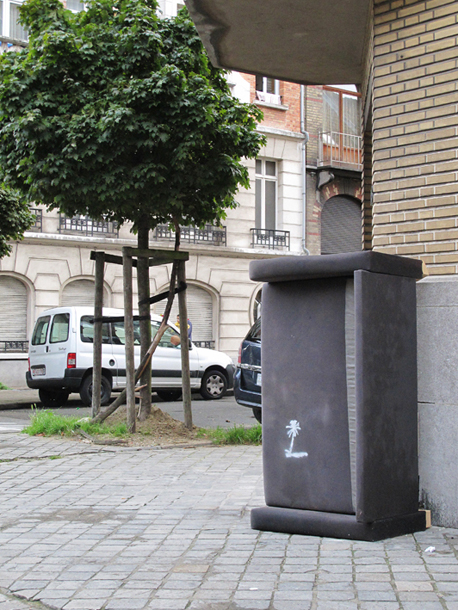 |
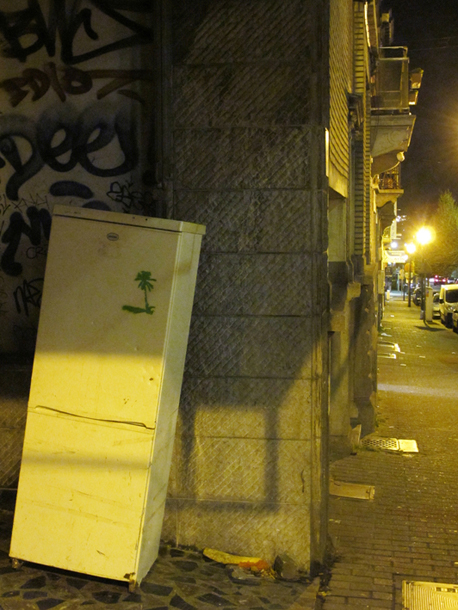 |
